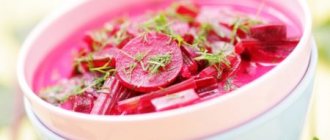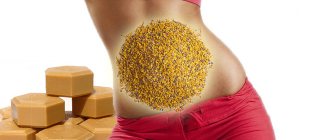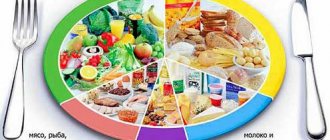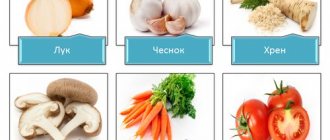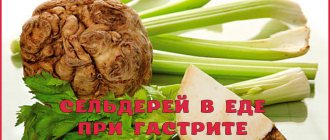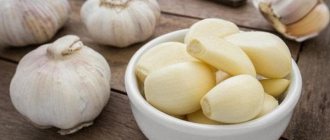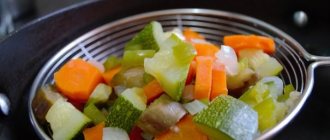The most important component of successful treatment of gastrointestinal pathologies is proper nutrition. In the phase of exacerbation of the disease, a strict and most gentle diet is prescribed, which completely excludes foods that provoke irritation of the gastric mucosa and slow down its regeneration.
Therefore, many patients suffering from acute or chronic gastritis are wondering whether it is possible to add fresh vegetables to their diet, in particular cucumbers and tomatoes, which are so common and beloved in our country.
Many people think that these simple fruits cannot cause harm and have a negative impact on the course of the disease, but this is not so.
What are the benefits of tomatoes
Tomato is a vegetable that contains carotenes, vitamins of groups B, A, C, K, E, PP, omega 3 and 6 acids, potassium, zinc. It contains a minimal amount of sugar and is completely free of starch. Thanks to its rich composition, tomato has a number of important positive properties:
- reduces the risk of developing diseases;
- improves intestinal motility in case of gastrointestinal dysfunction;
- promotes the elimination of toxins;
- has a strong antibacterial and anti-inflammatory effect.
Tomato recipes for patients with gastritis
- Vegetable stew. Chop the zucchini and pumpkin. Rub the carrots through a grater or cut into rings. Peel the skins of ripe red tomatoes and puree them in a blender or rub them through a coarse grater. Place the vegetables in the slow cooker and turn on the “Vegetable Stew” mode or simmer in a saucepan until the vegetables are completely cooked. Serve with fresh spinach.
- Homemade tomato juice. It is better to make this juice for gastritis at home yourself; a store-bought drink contains a lot of salt. Wash and peel the tomatoes, pass through a fresher or blender. Boil the resulting juice in an enamel bowl for 20 minutes. Then pour into sterile glass jars and seal with canning lids. Fresh tomato juice is a healing drink for gastritis, promotes the secretion of gastric secretions. Tomato juice lowers cholesterol, prevents constipation and breaks down homocysteine. Good for youthful skin and beautiful hair. If you mix tomato juice with carrot or pumpkin juice, you will get a healthy cocktail for the gastrointestinal tract.
- Salad of tomatoes, peppers and olives. Wash the tomatoes and cut them. Remove seeds and chop the pepper. Drain the jar of olives and add to the peppers and tomatoes. Leave the olives whole or chop to taste. Add chopped, washed greens. Stir and season with 1 tsp. olive oil.
- Vitamin salad. Cut the tomatoes and cucumbers, grate the carrots. Separate the cauliflower into florets and boil. Combine ingredients and top with classic yogurt.
- Carmen puree soup. Boil the rice and pass fresh tomatoes through a blender. Prepare a white sauce from skim milk and flour. Add rice, tomatoes, sweet baked peppers, and a piece of butter to the sauce. Season with yolks. Serve the dish hot.
- Tomato paste. Take a kilogram of tomatoes, wash the fruits thoroughly. Cut into slices and pass through a meat grinder, juicer or blender. Pour the mixture into a saucepan and place on the stove. Pour the paste into jars and cover with lids. This paste will not affect the state of the gastrointestinal tract, with no seasonings, salt or harmful additives.
The use of tomatoes in the menu for gastritis with low acidity
Hypoacid gastritis is characterized by a low level of production of hydrochloric acid and digestive enzymes. Therefore, food must be enriched with products that stimulate the production of hydrochloric acid necessary for digestion. With reduced acidity, gastroenterologists allow the consumption of 300-350 g of tomatoes daily.
The fruits must be ripe, peeled, raw or baked. Eating tomatoes for hypoacid gastritis helps normalize stools and avoid constipation, which leads to peptic ulcers.
Tomatoes are sources of vitamins
Vegetables are incredibly healthy, especially if they are consumed fresh. During heat treatment, most of the vitamins disappear. As a result, experts recommend regularly consuming fresh foods for diseases such as gastritis.
Tomatoes have the following list of vitamins:
- Vitamins B, E;
- Phosphorus;
- Zinc;
- Iron;
- Magnesium;
- Iodine.
Antioxidants that help stop the processes of cancer.
It is worth noting that all of the above substances are quickly absorbed and do not cause any problems in the future. For example, cucumbers are made mostly of water but contain healthy fiber.
Eating cucumbers allows you to safely absorb the fats found in meat. As a result, the functioning of the liver, kidneys and intestines returns to normal, which allows the body to protect itself from possible disorders.
Most of the composition of tomatoes is based on iron, iodine, sodium, nitrogen and sulfur, but in addition to these, tomatoes also contain glucose, fiber and several other unique acids.
Tomatoes during remission
The main rule during the period of remission is adherence to diet and nutrition.
- In the remission stage of gastritis with low acidity, gastroenterologists recommend that patients eat tomatoes.
- For gastritis, it is better to eat tomatoes heat-treated or stewed (a healthy dish is vegetable stew).
- During the period when the disease has subsided, the fruits are still freed from the skin.
It is important to know: consuming canned or pickled vegetables for gastritis of any etiology is strictly prohibited. After all, when preparing them, various types of spices and acetic acid are widely used, which can cause serious harm to the stomach and provoke an exacerbation of the disease.
What other juices can you drink?
For each type of acidity, you can only drink certain types of drinks. For low acidity, the following liquids are suitable:
- pineapple – contains a large amount of bromelanan, which breaks down protein and improves digestion. Take no more than 2 glasses per day;
- Calamus root nectar – accelerates the release of acid;
- Plantain nectar – consume no more than 1 teaspoon per day to relieve symptoms of the disease. Drink no longer than a month;
- Apple juice for gastritis should be drunk carefully, as it contains a lot of acid. The product is rich in vitamins. The digestive system begins to work more actively, constipation disappears, toxins are eliminated faster. If you have gastritis, you can drink no more than a glass of apple juice per day;
- cherry drink - harmful microorganisms, like apple nectar, die and acid is produced;
- turnip squeeze – soothes stomach pain, accelerates the restoration of intestinal flora;
- black currant drink – heals inflammation, relieves pain.
Juices with high acidity for gastritis can also be consumed. The use should be discussed with a doctor to take into account the characteristics of the body. For any form of gastritis, you can drink the following liquids: beetroot – has neutral acidity.
You should not get carried away with it if you have a tendency to diarrhea. Aloe extract accelerates wound healing and relieves inflammation. A squeeze of green salad, diluted with a few drops of lemon, is suitable.
The following drinks are suitable for taking with this type of disease:
- potato - good for the stomach with severe heartburn, nausea, stomach pain. Quickly removes all signs of the disease. Heals wounds, removes inflammation in the stomach. Take no more than 50 g at a time on an empty stomach for 7-10 days. If you have gastritis, you can drink only freshly squeezed juices; the healing effect is lost after 10 minutes of inactivity;
- cabbage – contains a lot of vitamin U, which relieves ulcers. Only white cabbage is suitable, its ingredients normalize acidity and soothe pain. You should not drink more than 200 g, more than 3 times a day. The effect of use will become noticeable in about a week. You can add freshly squeezed potato nectar to cabbage;
- onions, has a similar effect to cabbage drink;
- fresh pumpkin reduces acidity and speeds up the digestive tract;
- Cucumber drink relieves heartburn about half an hour after use and reduces acidity levels. Drink no more than 1/2 glass per day.
Properties of tomato juice
Tomato juice is saturated with beneficial vitamins and microelements, which are not inferior in vitamin content to tomatoes. Tomato juice contains a large amount of lycopene, which is very beneficial for the whole body and improves the condition of the gastrointestinal tract when used daily. Lycopene scavenges free radicals, reduces the likelihood of cancer, and strengthens the immune system. Therefore, it is useful not only for the stomach, but also for the body as a whole.
One cup of tomato juice contains your daily dose of vitamin C and includes the following vitamins:
- Thiamine: natural detoxification for the body;
- riboflavin: accelerates enzyme synthesis;
- choline: cholesterol-lowering;
- Lycopene: is the most powerful antioxidant.
Tomato juice is saturated with beneficial vitamins and microelements, which are not inferior in vitamin content to tomatoes.
How exactly does tomato juice affect the digestive system and why is it considered useful? Tomato juice contains substances that eliminate the processes of decay and fermentation in the intestines. The fermentation process occurs when there is excessive protein consumption or failure to digest food in the stomach. It is also not recommended to load the gastrointestinal tract with heavy food in the evening, when bowel function decreases. The digestion process continues, but pathogenic microflora is used. The result is pain, bloating, flatulence.
Tomato juice allows you to get rid of the fermentation process in the stomach, normalize the functioning of the digestive system and get rid of unpleasant symptoms in the stomach. But drinking tomato juice enlarges the opening of the colon, which begins to narrow, creating plugs that put pressure on the gastrointestinal tract.
Is it possible to drink fresh tomato juice if you have gastritis?
Gastric juice performs two functions at once: digesting food and fighting pathogenic microflora and bacteria. Accordingly, a decrease in acidity disrupts natural digestive processes and fermentation begins in the stomach. Nausea and vomiting occur due to toxins released during decay. Drinking tomato juice normalizes the production of gastric enzymes, increases acidity, thereby improving digestion.
A glass a day will be beneficial for digestion - if the acidity of gastric juice is low. If the acidity is high, then tomato juice is not recommended.
Tomato juice is suitable for patients with gastritis, but during exacerbation of gastritis it is best to avoid it. Tomato juice is contraindicated for gastritis - gastritis with high acidity. It is recommended to give preference to tomato juice that is pasteurized. The effect of pasteurized tomato juice on the gastrointestinal tract is milder. Also, tomato juice for gastritis cannot be salted, but chopped herbs can be added to tomato juice.
Tomatoes for chronic pancreatitis
If a person has a chronic phase of pancreatitis, there are no acute symptoms or pain, then doctors are allowed to gradually add fruits to the menu, but not in raw form.
In other words, tomatoes must be heat treated before consumption. It is recommended to cook tomatoes in the oven, steam them or add them to other dishes.
Before use, you need to remove the skin from the tomato and grind the pulp itself to make tomato porridge.
The first use should be minimal, only 1 tbsp. grated and processed tomatoes.
If there are no exacerbations, and the inflammation of the pancreas itself has passed, then you can use 1 fruit per day, boiled or baked.
In case of long-term chronic form of pancreatitis, only ripe tomatoes should be used during cooking.
It is prohibited to eat or add green or not very ripe tomatoes to dishes. Even after heat treatment, such food can provoke an exacerbation and the appearance of symptoms characteristic of the disease, and inflammation will intensify.
Fruit lovers are interested in whether tomatoes are monotonous for pancreatitis in the chronic phase in the form of rolls.
Such dishes need to be removed from the menu altogether. Such food can harm a person for the following reasons:
- The composition uses vinegar.
- Increased salt concentration in preserved food.
- There is citric acid.
- Hot spices are used, even of natural origin, for example, horseradish or garlic.
Such additives cause an exacerbation of symptoms. In addition, you will need to give up possible tomato-based products that are sold in stores.
These include ketchups, sauces, pastes and other products. During the production of such food, various seasonings and preservatives are used, which negatively affect the condition of the pancreas.
Tomatoes for acute pancreatitis
In acute forms of the disease, it is strictly prohibited to use fresh fruits. Tomatoes for pancreatitis can be administered only 1-2 weeks after the acute symptoms have resolved.
The ingredient should only be used in boiled and ground form. Despite the benefits of the product, in case of acute illness, even after the elimination of characteristic symptoms, doctors advise to refrain from using such an ingredient.
To ensure that the body receives useful substances when using strict diets, it is best to use other vegetables.
For example, in the acute phase of the pathology, tomatoes should be replaced with carrots, potatoes or pumpkin.
These vegetables are no less useful, but have a much better effect on the digestive process and the condition of the pancreas.
Benefits and harm to the body
With pancreatitis, each patient must adhere to strict nutritional rules to avoid exacerbations of the disease and other troubles.
Many people do not know whether or not they can eat tomatoes if they have pathology. Interest in this issue especially increases in the summer, when the season of tomatoes and other vegetables begins.
Fruits can have different effects on the body, so it is necessary to highlight both the benefits of tomatoes and the harm.
Among the main benefits are:
- The pulp contains many vitamins from different groups, as well as useful acids, which have a positive effect on the immune system.
- It contains selenium, which normalizes the condition and functioning of memory, improves health and reduces the likelihood of developing cancer.
- Systematic use improves metabolic processes due to the large amount of microelements.
- The fiber in tomatoes is tender, contained in the peel, which improves intestinal motility and absorption of nutrients.
- Tomatoes gently cleanse the body of toxins and normalize intestinal flora.
- The formation of gases and putrefactive processes in the intestines is reduced.
- When consumed, harmful cholesterol is removed.
- The calorie content of the product is low, so the fruits are often used for dietary nutrition.
Among the harmful properties, it is worth highlighting the following:
- The pulp contains not only useful substances, but also harmful ones, which negatively affect the condition of the parenchyma of the inflamed pancreas.
- Once in the stomach, tomatoes are difficult and take a long time to digest.
- The secretion of gastric juice in the stomach increases, which in case of pancreatitis can negatively affect health.
It is worth noting that the composition also contains serotonin and taurine. These substances can normalize the patient’s mood, prevent blood clots from developing, and also improve blood pressure and the functioning of the cardiovascular system.
To figure out whether tomatoes are possible for pancreatitis, perhaps, based on the stage of the disease. For each course of pathology, the process of use may differ.
